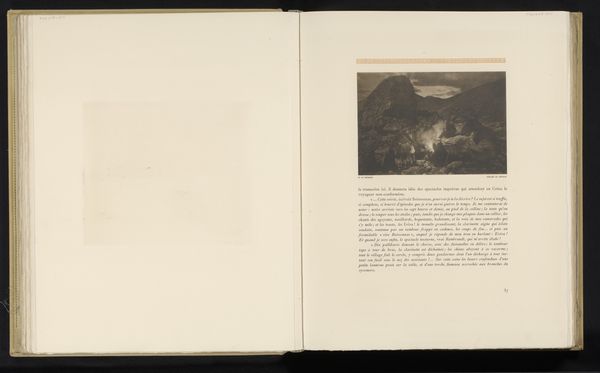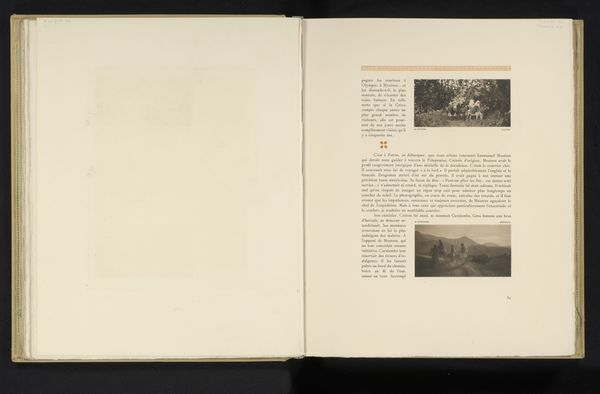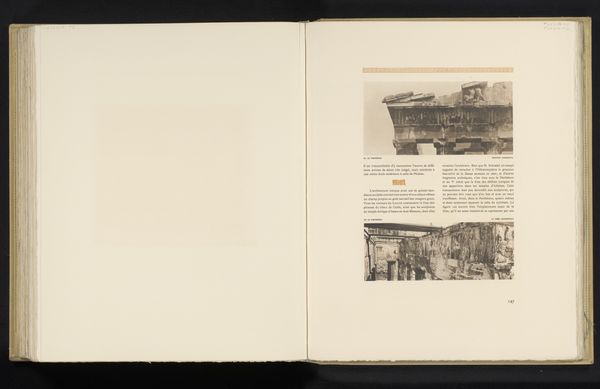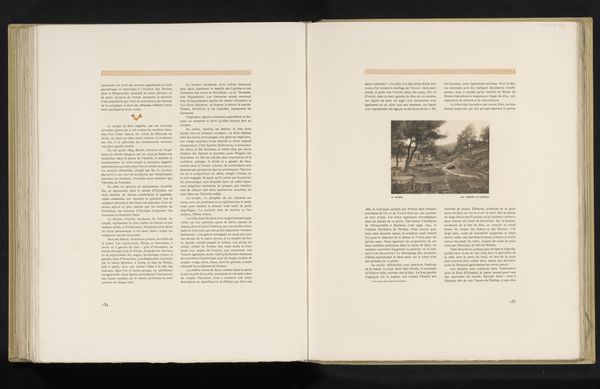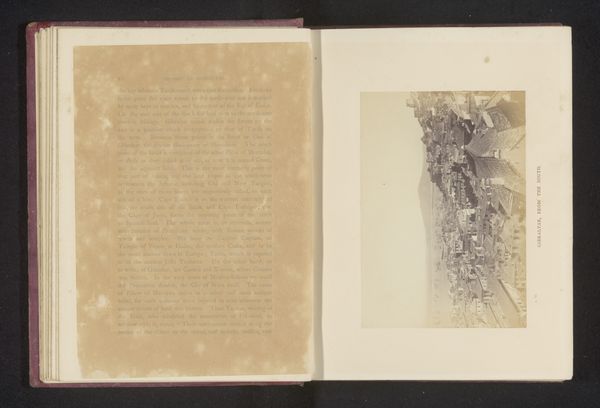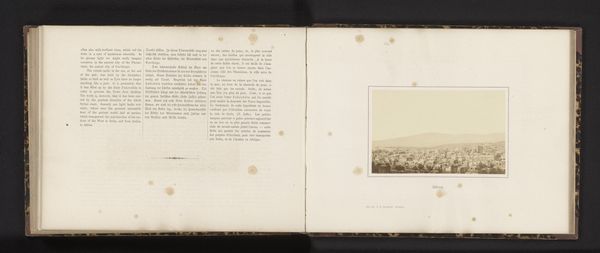
print, paper, photography, collotype, architecture
#
aged paper
# print
#
landscape
#
paper
#
photography
#
collotype
#
paper medium
#
architecture
#
realism
Dimensions: height 134 mm, width 225 mm
Copyright: Rijks Museum: Open Domain
Curator: Looking at this photograph, I’m struck by the sheer solidity of the ruins. It speaks to an enduring, if crumbling, legacy. Editor: Indeed. This is a collotype print, part of a larger album by Fréderic Boissonnas, titled "Ruïnes van Tiryns op de Peloponnesos," dating to before 1910. What's fascinating is Boissonnas’s commitment to using the relatively new technology of photography to document ancient sites. Curator: Collotype… that suggests a painstaking process. It’s not just a snapshot; it involves considerable craft. The textures within the aged paper and ink lend themselves to an atmosphere of timelessness that is emphasized through labor. Editor: Precisely. He wasn't just recording what was there; he was curating a historical narrative through the photographic medium. The rise of photography and its effect on how societies perceived history played a pivotal role in constructing this vision. Curator: The framing is intentional. See how the stones dominate the foreground? It pushes the eye upward toward what are maybe mountains, yet the materials in the lower registers and foreground serve to trap our eyes to linger and meditate on something ancient that once knew glory. Editor: I think you’re right; this composition frames the ancient site in a way that speaks to its lasting influence and relationship with contemporary power structures. Boissonnas wasn't merely a recorder, but a participant in how we interpret and assign value to these historical monuments. How museums might have commissioned work to highlight cultural lineage, perhaps? Curator: Interesting thought. Consider how these photographs would have circulated: the very paper, the collotype technique—it elevates what could be just a record into something collectible, valuable. The process gives us context. Editor: Ultimately, pieces like this invite us to think about how history is produced and consumed, literally and figuratively, and how even the materials used in its documentation are loaded with cultural meaning. Curator: It gives us pause. Looking again at this image makes me contemplate material endurance—what endures, how, and why. Editor: And it is through Boissonnas' vision we have these questions—it prompts us to reconsider the politics embedded in seemingly neutral images.
Comments
No comments
Be the first to comment and join the conversation on the ultimate creative platform.
